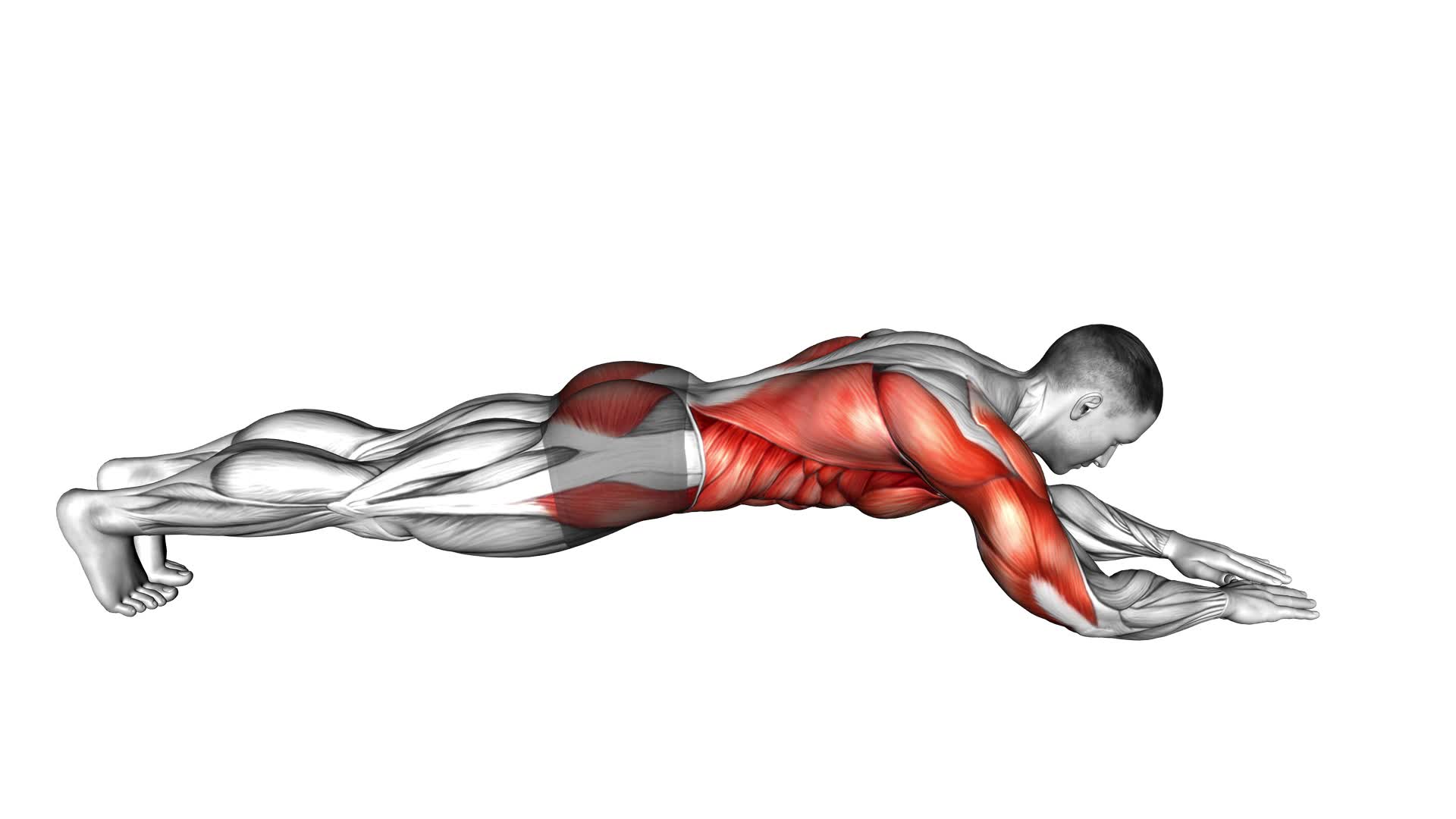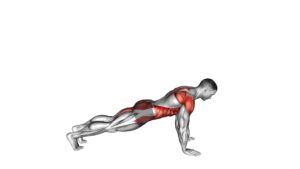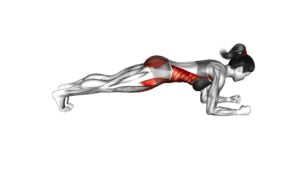Forward Arms Plank (male) – Video Exercise Guide & Tips

Looking to strengthen your core and upper body? The forward arms plank is the perfect exercise for you. In this video exercise guide, we'll show you the proper form and technique to get the most out of this challenging move.
Watch This Exercise Video
You'll learn the benefits of the forward arms plank, common mistakes to avoid, and variations to keep your workouts interesting.
Get ready to build a stronger, more resilient body with our helpful tips and expert guidance.
Key Takeaways
- Forward Arms Plank strengthens core and improves stability.
- Proper form and technique are crucial for maximum effectiveness.
- Common mistakes to avoid include sagging or lifting hips too high and not aligning shoulders properly.
- Variations and progressions can be incorporated to increase difficulty and muscle engagement.
Benefits of Forward Arms Plank
By performing the Forward Arms Plank, you can strengthen your core and improve your overall stability. This exercise is highly effective in targeting your abdominal muscles, as well as your lower back, hips, and shoulders. The health benefits of this plank variation extend beyond just aesthetic appeal.
When you engage your core muscles, you're enhancing your body's ability to stabilize and support your spine, which can alleviate back pain and improve posture. In addition, a strong core can enhance your athletic performance in various activities, such as running, weightlifting, and even everyday tasks like lifting heavy objects.
The Forward Arms Plank is a versatile exercise that can be modified to fit your fitness level. Whether you're a beginner or an advanced athlete, this exercise can be tailored to challenge your core strength and stability. To maximize the benefits, it's important to maintain proper form and technique. This will ensure that you're engaging the correct muscles and minimizing the risk of injury.
Proper Form and Technique
To ensure optimal results and minimize the risk of injury, it's essential to maintain proper form and technique while performing the Forward Arms Plank.
This exercise is highly effective for strengthening your core, shoulders, and upper body.
It's important to dispel some common misconceptions about the Forward Arms Plank.
Firstly, it isn't necessary to hold the plank position for an extended period of time to achieve results. Instead, focus on maintaining proper form and engaging your muscles throughout the exercise.
Secondly, many beginners may find it challenging to hold the plank position with straight arms. In such cases, modifications can be made by performing the exercise on your forearms instead. This reduces the strain on your wrists and allows you to build strength gradually.
It's crucial to maintain a straight line from your head to your heels, engaging your core muscles and avoiding any sagging or arching of the back.
By practicing proper form and technique, you'll maximize the benefits of the Forward Arms Plank and minimize the risk of injury.
Now, let's move on to the next section and discuss some common mistakes to avoid.
Common Mistakes to Avoid
To avoid common mistakes while performing the Forward Arms Plank, make sure you maintain proper form and technique.
One of the most common mistakes people make is allowing their hips to sag or lift too high. This not only puts strain on your lower back but also takes away the effectiveness of the exercise. To avoid this, engage your core muscles and keep your body in a straight line from head to toe.
Another common mistake isn't properly aligning your shoulders. Your hands should be directly under your shoulders, and your elbows should be slightly bent. This will help distribute your weight evenly and prevent unnecessary strain on your wrists and shoulders.
It's also important to avoid holding your breath while performing the Forward Arms Plank. Remember to breathe steadily and deeply throughout the exercise to maintain a steady flow of oxygen to your muscles.
Lastly, rushing through the exercise and not holding the proper position for the recommended amount of time is another mistake to avoid. Aim to hold the plank position for at least 30 seconds to a minute, gradually increasing the duration as you get stronger.
Variations and Progressions
Continuing from avoiding common mistakes, you can progress the Forward Arms Plank by incorporating variations to challenge your core muscles even further. These advanced modifications not only increase the difficulty of the exercise but also enhance muscle engagement for a more effective workout.
One way to intensify the Forward Arms Plank is by adding leg lifts. Begin in the plank position, then lift one leg off the ground while maintaining a straight back and engaging your core. Hold for a few seconds before alternating legs. This variation activates not only your core but also your glutes and hamstrings.
Another variation is the side plank. Instead of supporting your body with your forearms, place one hand on the ground and extend your arm, while stacking your feet on top of each other. This challenges your oblique muscles and improves overall stability.
To further challenge yourself, you can incorporate dynamic movements such as plank jacks or mountain climbers. Plank jacks involve jumping your feet apart and together while maintaining the plank position, while mountain climbers require bringing your knees towards your chest in a running motion.
By incorporating these advanced modifications, you can take your Forward Arms Plank to the next level and maximize your muscle engagement.
Now, let's move on to the next section for tips on how to achieve a stronger forward arms plank.
Tips for a Stronger Forward Arms Plank
To achieve a stronger Forward Arms Plank, focus on maintaining proper form and engaging your core muscles throughout the exercise. This won't only help you improve your balance and stability but also strengthen your upper body muscles. Here are some tips to help you maximize the effectiveness of your Forward Arms Plank:
- Keep your body in a straight line from head to toe, avoiding any sagging or arching of the back.
- Squeeze your glutes and engage your abdominal muscles to stabilize your body.
- Be mindful of your shoulder position, keeping them directly over your wrists and avoiding any shrugging or rounding.
- Breathe deeply and exhale as you contract your core muscles, which will help to maintain stability and control.
In addition to these tips, incorporating core stability exercises and strengthening upper body muscles can greatly enhance your Forward Arms Plank. Exercises such as Russian twists, mountain climbers, and push-ups can target and strengthen the muscles needed for this plank variation.
Remember to start with proper form and gradually increase the duration of your plank as your strength improves. By incorporating these tips and exercises into your routine, you'll be well on your way to mastering the Forward Arms Plank and building a stronger, more stable core.
Frequently Asked Questions
How Long Should I Hold a Forward Arms Plank to See Results?
To see results from a forward arms plank, it's important to hold the position for an adequate amount of time. The duration can vary depending on your fitness level and goals. Generally, aim to hold the plank for at least 30 seconds to begin with, gradually increasing the time as you get stronger.
Remember to engage your core and maintain proper form throughout. The forward arms plank offers various variations and benefits, such as improved core strength and stability.
Can I Do a Forward Arms Plank if I Have a Wrist Injury?
If you have a wrist injury, it's best to avoid the forward arms plank exercise. Putting pressure on your wrists could worsen the injury.
Instead, try modifying the plank by using a forearm plank position. This reduces the strain on your wrists while still engaging your core muscles effectively.
Alternatively, you can explore other plank variations that don't involve putting weight on your hands, such as the side plank or the bird dog plank.
Is It Necessary to Engage My Core During a Forward Arms Plank?
To perform a forward arms plank, engaging your core is essential. Core engagement during plank variations, like the forward arms plank, helps stabilize your body and strengthens your abdominal muscles. By contracting your core muscles, you create a solid foundation, preventing your lower back from sagging and maintaining proper posture.
Can I Do a Forward Arms Plank on a Stability Ball?
Yes, you can definitely do a forward arms plank on a stability ball. This modification adds an extra challenge to your core and stability training. It helps engage your muscles in a different way and enhances the effectiveness of the exercise.
Additionally, if you're looking for alternative plank variations, the stability ball plank is a great option to switch up your routine and target different muscle groups.
Should I Incorporate Breathing Techniques While Performing a Forward Arms Plank?
When performing a forward arms plank, it's important to incorporate proper breathing techniques. By focusing on your breath, you can engage your core muscles more effectively and maintain stability throughout the exercise.
Inhale deeply through your nose, allowing your abdomen to expand, and exhale fully through your mouth, contracting your abdominal muscles. This rhythmic breathing pattern not only enhances your plank performance but also promotes relaxation and reduces stress.
Additionally, some people find it beneficial to incorporate music in their plank workouts for added motivation and enjoyment.
Conclusion
In conclusion, the forward arms plank is a highly effective exercise that targets multiple muscle groups and improves core strength. By maintaining proper form and avoiding common mistakes, you can maximize the benefits of this exercise.
Additionally, incorporating variations and progressions can challenge your muscles even further. Remember to engage your core and breathe properly throughout the exercise for optimal results.
With consistent practice and proper technique, you can achieve a stronger forward arms plank.

Author
Years ago, the spark of my life’s passion ignited in my mind the moment I stepped into the local gym for the first time. The inaugural bead of perspiration, the initial endeavor, the very first surge of endorphins, and a sense of pride that washed over me post-workout marked the beginning of my deep-seated interest in strength sports, fitness, and sports nutrition. This very curiosity blossomed rapidly into a profound fascination, propelling me to earn a Master’s degree in Physical Education from the Academy of Physical Education in Krakow, followed by a Sports Manager diploma from the Jagiellonian University. My journey of growth led me to gain more specialized qualifications, such as being a certified personal trainer with a focus on sports dietetics, a lifeguard, and an instructor for wellness and corrective gymnastics. Theoretical knowledge paired seamlessly with practical experience, reinforcing my belief that the transformation of individuals under my guidance was also a reflection of my personal growth. This belief holds true even today. Each day, I strive to push the boundaries and explore new realms. These realms gently elevate me to greater heights. The unique combination of passion for my field and the continuous quest for growth fuels my drive to break new ground.







